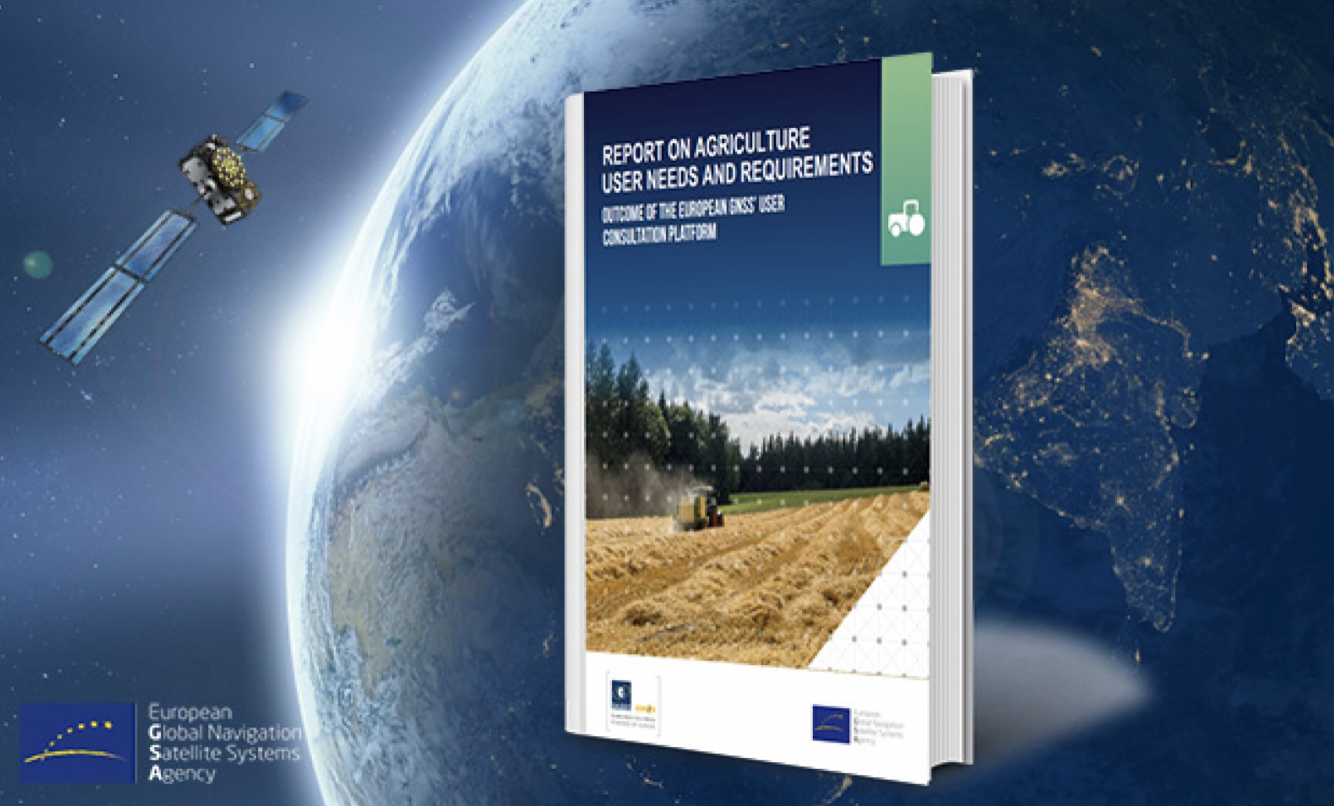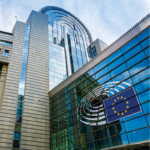Businesspeople, politicians, civil servants and a range of engineers and researchers gathered in Brussels for the 15th European Space Conference in January. Topics were many and varied, with war, dependency, resilience and a big-time launcher crisis heading the list.
One subject, more than any other, preoccupied attendees of this year’s European Space Conference. In a stirring welcome address, High-Representative/Vice-President of the European Commission Josep Borrell Fontelles told the assembly, “One year ago, we were just on the eve of war. Now, we are in the middle of a war, so the security of Europe in space is a very timely subject.” Our regular readers know that subject has been very timely for a while.
“Last year,” Borrell continued, “we stressed the increased level of threats in the space domain, and we now believe we need a change of paradigm. Space will become a kind of battlefield, of competition and confrontation. Satellite imagery and communications have proved to be game changers for the Ukrainian armed forces and the civilian population.”
Borrell recalled the cyber-attack on Viasat on the night of the Russian invasion that knocked out communications for several days, affecting neighboring countries as well as Ukraine. “This has revealed our own vulnerabilities,” Borrell said, “affecting our own member states. These are critical infrastructures that we need. If they fail, our economies, our entire lives, will be disrupted. In 2021, Russia tested a kinetic anti-satellite weapon. It was an irresponsible act that signaled to anyone that Russia is prepared to put anyone’s satellites at risk.”
Timo Pesonen, director-general, DG DEFIS, European Commission, also recalled the days just before the start of the war. “A year ago, if somebody in this room had asked who thought Putin was going to attack the capital of Ukraine in one month’s time, I’m not so sure how many of us would have raised our hands. Of course, there was intelligence information around that he was gathering troops at the border, but I think we were all hoping for a miracle to happen.”
What They Thought About That
The 15th edition of the conference was a return to form, that is to say a return to format. Two years ago, In 2021, the conference was mostly a ‘virtual’ online affair, due to the crisis we need not name. Then, in 2022, it went back to being held in person, but many habitual attendees stayed home, choosing to keep their distance until the coast was well and truly clear. By all accounts, that edition was a rather forlorn affair.
This year’s event felt like old times. The big plenary room was full to bursting, everyone was breathing deeply and the lunch hall, lobbies, corridors and side rooms were abuzz. And, as they will, fresh from the affray in the big room, people exchanged views candidly once outside. Having heard a number of high-profile presenters expressing their surprise and dismay at the events of February 2022, more than one corridor commentator expressed their own surprise at the surprise. “Didn’t Russia invade Georgia a few years ago?” said one, off the record. “Didn’t they just annex Crimea?”
Another well-known personality at the conference whispered, confidentially, “We were hearing every day from the intelligence experts. Of course we could see what was about to happen. There was no surprise.” Still another participant cited the regime in question’s repeated past “criminal” actions, saying the surprise was perhaps more about the absolute scale of the thing.
In 2017, Inside GNSS published an article titled, “EU and Russia: Lost in Space?” that questioned the advisability of maintaining a dependent relationship with Russia in the wake of that country’s aggressive actions against a familiar target. According to the article:
In April, the United States officially pulled the plug on almost all space cooperation with Russia as a result of the latter nation’s intervention in Ukraine.
According to a Space News report, cited in the 2017 article, Europe did not follow suit:
At the height of the bloodletting in eastern Ukraine last June, ESA [European Space Agency] Director-General Jean-Jaques Dordain said, “The European Space Agency has seen no signs that its relations with Russia will be curtailed as a result of the confrontation between Russia and the West concerning Russia’s actions in Ukraine.”
Even though:
Speaking in Brussels, one unnamed European official said, “The situation in Ukraine is very tense indeed, with many obvious consequences on the relationship between Russia and Europe.”
The Launcher Crisis
So much for warning signs. Europe now has a very present situation to contend with. In an era of ever-accumulating crises, we may add another: ‘The European Launcher Crisis.’ Borrell said, “This war was a wake-up call. We are becoming much more aware of the dependencies on foreign suppliers. For example, when the Russian Soyuz teams suddenly left the spaceport of Kourou, they put in danger our launch capabilities.”
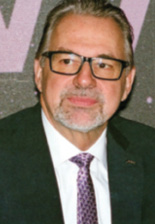
“WE BUILT GALILEO IN RESPONSE TO AN EXISTING NAVIGATION NETWORK THAT WE ALL KNOW VERY WELL. TODAY, GALILEO IS PROVIDING THE MOST ACCURATE SIGNAL FOR NAVIGATION, FOR POSITIONING, AND THIS IS SOMETHING WHERE EUROPE CAN BE VERY PROUD.”
Josef Aschbacher, high-representative/vice-president, director general, ESA
But war isn’t the only problem. Josef Aschbacher, Director General of ESA, in his presentation of 2022 highlights, acknowledged other setbacks: “We had the successful launch of our MTG satellite on the 13th of December [onboard Ariane 5], but also just before Christmas, on the 20th of December, we had the failure of our Vega-C launcher, after we had had a successful inaugural flight in July, earlier in the year.”
According to reports, the Vega-C’s Zefiro 40 second stage deviated from its intended trajectory following a loss of pressure, resulting in reentry over the Atlantic, less than 1,000 km from its launch site. Two Airbus Defence and Space dual-use Pléiades satellites were lost in the misfire. Zefiro is a family of solid-fuel rocket motors developed by Avio.
“And this puts Europe in a very critical situation on launchers,” Aschbacher said, “due to the situation of our delays on Ariane 6.” Also in 2022, ESA again delayed the first flight of Europe’s Ariane 6 launcher, this time to late 2023.
“With this, and with the halt of the Soyuz launches from Kourou and the Vega-C failure, Europe is in a very serious situation. Guaranteed access to space is a top priority for Europe, for ESA, for all of us, because if we cannot guarantee access to space, we will seriously shut down launching of infrastructure on which we depend.” That includes completed Galileo satellites currently sitting on the ground, ready for launch.
Aschbacher said it is crucial to get Ariane 6 and a safe and functioning Vega-C onto the launch pad as quickly as possible, “but we also need to invest in the future, to engage a new group of launchers, micro-launchers, mini-launchers. And later we will need reusable launchers, after Ariane 6 and Vega-C. This is a weakness of Europe today.” Stéphane Israël, CEO of Arianespace, agreed: “In the long term, we will need a heavy, reusable launcher. For the European flagship programs, Galileo and so on, you will need a big launcher, no doubt.”
For now, the waiting goes on. A spokesperson for ESA told Inside GNSS the agency is actively seeking a solution for launching grounded Galileo satellites, which can include non-European (and non-Soyuz) launchers.
Self-Reliance Versus Dependency
An unintentionally provocative take: For all its ingenuity and scientific excellence, and in spite of Jules Verne, Europe has lagged behind as a source of inspiration in space. At the height of the Cold War, the U.S. and the Soviet Union drew the hearts and minds of the world toward the stars, on the tails of their military-fueled space race. Today, the Chinese government has managed to link its space program to the country’s immense sense of pride and their belief in its extraordinary destiny. Europe, on the other hand, for all its technical achievements and steady reliability, has remained a rather polite, very competent but otherwise low-key partner seeker. Not, one should add, without success.
Aschbacher said, “We built Galileo in response to an existing navigation network that we all know very well. Today, Galileo is providing the most accurate signal for navigation, for positioning, and this is something where Europe can be very proud.”
Miguel Romay, general manager navigation systems, GMV said, “When I started in navigation more than 30 years ago, Europe was completely out of the game. We had GPS, GLONASS and nothing from Europe. We started to move toward satellite navigation, dreaming about having something similar to what the Americans had.”
Must Europe always turn to others for inspiration? In this time of geopolitical turmoil and economic uncertainty, who will serve as Europe’s model? And on whom will it depend for help?
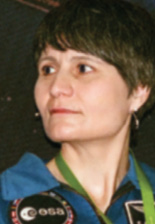
”EIGHT YEARS AGO, I FLEW TO SPACE ON A RUSSIAN VEHICLE, THE SOYUZ. A YEAR AGO, I FLEW ON A U.S. VEHICLE, NOT EVEN A GOVERNMENT VEHICLE BUT A VEHICLE PROVIDED BY A PRIVATE COMPANY AS A SERVICE. YOU HAVE THAT EXPERIENCE AND YOU START TO SCRATCH YOUR HEAD, AND THINK, ‘WELL, THIS IS GREAT. I LIKE INTERNATIONAL COOPERATION, BUT WHAT ABOUT FLYING IN A EUROPEAN VEHICLE?’”
Samantha Cristoforetti, ESA Astronaut
“We cannot implement the U.S. model,” Israël said. “The U.S. spends five times more on space than Europe. We can take some lessons, but the copycat strategy will not work. And this should not be about Europeans competing against each other. This is the U.S. and China competing against Europe. It’s time to organize the industrial base in order to compete. We see how it goes in the U.S., with the Inflation Reduction Act, how they have changed overnight the competitiveness of their companies against us. Let’s not be naive, let’s take the bull by the horns and make it happen.”
André-Hubert Roussel, president of Eurospace, said, “We don’t benefit from the measures that have been put in place by some of our competing nations, specifically for the U.S. industry. We are facing nearly 10% inflation in Europe. It’s going to cost our space industry 500-750 million euros in extra costs this year. We have to tackle this with our partners, starting with ESA and the EC [European Commission]. We need venture capitalists, and we need to make sure we have a level playing field with the U.S.”
Aschbacher said, “Today, Europe is not capable of launching its own astronauts, with its own capabilities, into space, because we are flying with our good friends and strong partners of NASA, the Americans. In the past few years, we were flying with Russia, but if you look 10 years into the future, I think Europe should seriously consider having its own capability. This is much bigger than space. It is geopolitical, it is societal, it is about the unity of Europe. We are not fast enough and we are not bold enough.”
Speaking of astronauts, ESA Astronaut Samantha Cristoforetti said, “Eight years ago, I flew to space on a Russian vehicle, the Soyuz. A year ago, I flew on a U.S. vehicle, not even a government vehicle but a vehicle provided by a private company as a service. You have that experience and you start to scratch your head, and think, ‘Well, this is great. I like international cooperation, but what about flying in a European vehicle?’ At this point, the question is what’s wrong with us? Why do we not have that ambition?”
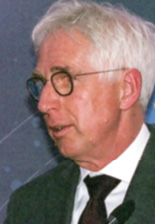
”GALILEO HAS BEEN DESIGNED TO BE VERY ROBUST.
Javier Benedicto, director of navigation, ESA
THE SPECTRUM OF SERVICES THAT ARE BEING DEPLOYED, STARTING FROM THE BASIC SERVICE, ADDING AUTHENTICATION, THE HIGH-ACCURACY SERVICE, THE PRS [PUBLIC REGULATED SERVICE], EMERGENCY SERVICES THAT WILL BE DEPLOYED IN THE FUTURE, SAFETY-OF-LIFE, WHICH IS PROVIDED BY EGNOS, ALL THIS NEEDS TO BE ASSURED.”
“We live at the end of an era of happy globalization,” said Thomas Dermine, Belgium’s State Secretary for Economic Recovery and Strategic Investments, in charge of Science Policy. “We see a rise in geopolitical tension, we see commercial tension, we see a rise in protectionism. If you look at the American Inflation Reduction Act, it impacts all sectors. It is going to impact the space industry. A few years ago, we were seeing all kinds of cooperation with other parts of the world. We see today that our cooperation with Russia is completely ended. In China we see rising tension, and even with the Americans. We need to rely more on our own capabilities, because you don’t know what the future will be.”
Then Came PNT
Amid all the soul-searching, conference attendees suddenly found themselves faced with a series of presentations on what it all means for the positioning, navigation and timing troops. “It was already there before the war,” Pesonen said, “but the war has certainly underlined it. Resilience is a key word for us.”

”WE ARE OFFERING SERVICES THROUGH DIFFERENT SIGNALS, AT DIFFERENT FREQUENCIES, AND THIS IS PRETTY GOOD AGAINST INTERFERENCE. THEN WE HAVE OUR AUTHENTICATION SERVICE, WHICH IS COMING UP THIS YEAR, AND THERE WE WILL BE PRETTY GOOD AGAINST SPOOFING. WE CAN SPEAK ABOUT THE SECOND-GENERATION SATELLITES, WHICH ARE GOING TO PROVIDE MORE ROBUST SIGNALS.”
Paul Flamant, Head of Unit, Satellite Navigation, DG DEFIS, European Commission
Paul Flamant, Head of Unit, Satellite Navigation, DG DEFIS, European Commission, assessed the state of resiliency of Europe’s GNSS systems: “We are offering services through different signals, at different frequencies, and this is pretty good against interference. Then we have our authentication service, which is coming up this year, and there we will be pretty good against spoofing. We can speak about the second-generation satellites, which are going to provide more robust signals.
“But also,” he said, “it’s very important in terms of satellite navigation resilience that we keep our good agreements with those brilliant people that are on the other side of the Atlantic. We have agreements with the Americans, and it is very important that we continue this collaboration.”
Flamant also cited the EU’s European Radio Navigation Plan. “I invite people to read it,” he said. “In it, we call on people to come up with new resilience solutions, and we’ve been trying to see what really needs to be done, in terms of navigation but also in terms of timing. There were the workshops organized recently at the Joint Research Center at ISPRA, where we could see what other timing and navigation systems exist.”
“From the point of view of operations,” EUSPA Executive Director Rodrigo da Costa said, “we have two control centers, we have two security monitoring centers, so there’s a lot of resilience in there, but we also exercise that resilience. We carry out simulations, a number of simulated situations, working with our external action service, where we simulate techniques and responses. This is incredibly important in order to ensure the preparedness of our operational teams.”
A New Architecture
ESA Director of Navigation Javier Benedicto said, “Satellite navigation really has a very strategic dimension for all of us. It has become a commodity with respect to our daily life. It contributes to economy, but also to implementing government policy. This fundamental nature creates a notion of dependency. We depend every minute on it, and therefore there is an expectation on the part of users. These are systems that have to work all the time.
“This in turn creates responsibility, for the people who conceive the system,” Benedicto said. “Galileo has been designed to be very robust. The spectrum of services that are being deployed, starting from the basic service, adding authentication, the High-Accuracy Service, the PRS [public regulated service], emergency services that will be deployed in the future, safety-of-life, which is provided by EGNOS, all this needs to be assured.”
Benedicto outlined the new LEO PNT program adopted at the most recent ESA ministerial conference. “This program is the largest in the world of its nature,” he said. “It brings a new dimension, not based anymore on geostationary or MEO satellites but also on LEO satellites. The trick of the business is to interconnect all that from the user perspective. The user does not know or care if the signal is coming from a LEO or a MEO or GEO satellite.
“We will also see an evolution affecting the EGNOS service, today based on geostationary signal broadcast, but in the future also to be broadcast most probably from MEO and LEO satellites. And we see a future in deploying navigation signals in new frequency bands, not only in the L band but also in lower bands and higher bands. All this leads to a multi-layered PNT architecture.”
A Constellation for Digital Resilience
IRIS2 (Infrastructure for resilience, interconnectivity and security by satellite) is the EU’s newest space-based infrastructure, being mounted in record time and offering enhanced communication capacities to governmental users and businesses, and delivering high-speed internet broadband in connectivity dead zones. Initial services are scheduled for launch as early as 2024, with full operational capability by 2027.
Benedicto said, “IRIS2, Galileo and EGNOS all have to be connected, because, at the end of the day, we want to reach the smartphone, we want to reach the airplane cockpit, the dashboard of the autonomous vehicle, and this requires a combination of sensors and techniques for both communication and navigation. This will require the use of optical technologies, quantum communication, quantum encryption, and with all of this, I am sure that Europe will remain at the forefront of resilient PNT.”
On that very inspiring note, we leave the 15th European Space Conference, with apologies to all who were not cited. We will meet again, and so say not adieu, but au revoir. Until next time…


